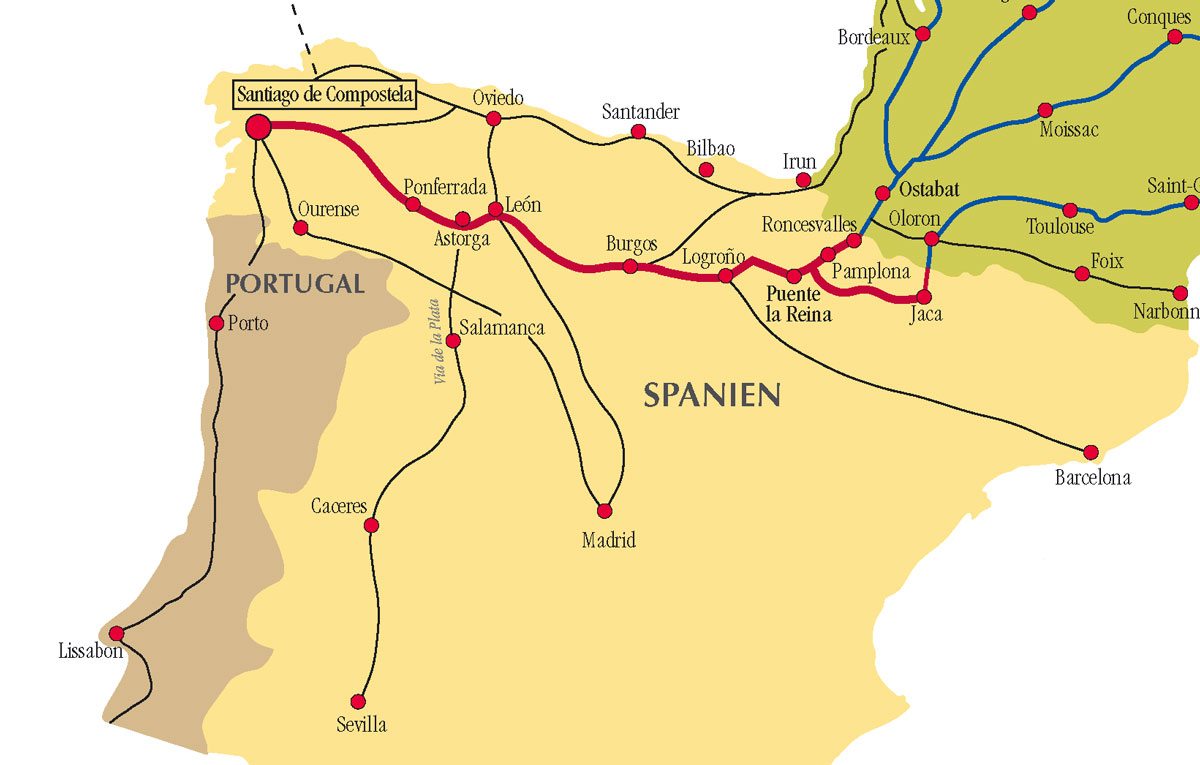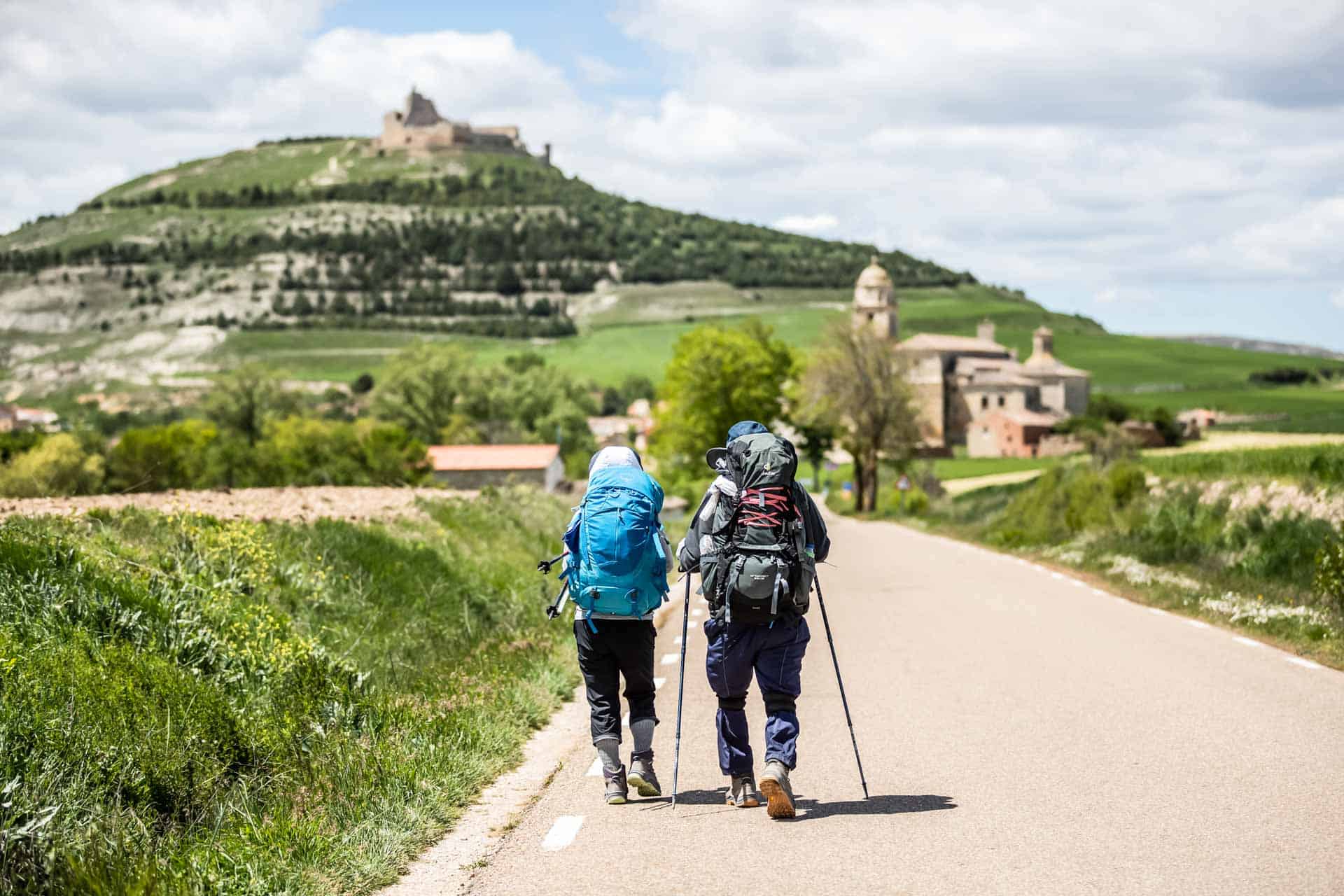
This road, known as the Camino Primitivo, can be started from Lugo or Oviedo. It is a fairly easy route, although it is highly conditioned by asphalt roads. The Camino Ingles begins its pilgrimage in Ferrol and has a total length of 96 kilometres spread over 7 stages. The name of this road comes from being the one taken by the pilgrims from the British Isles, mainly English and Irish. It has a medium difficulty, so it is suitable for practically anyone. It has a length of 87 kilometres divided into 8 stages. It can be done starting from Finisterre to Santiago or from Santiago to Finisterre continuing the route. The Camino de Santiago from Finisterre makes its voyage “backwards”, i.e. It is divided into 34 stages of approximately 25 kilometres. There are about 824 kilometres between Irun and Santiago de Compostela. It goes through all of the peninsula from the east to the west across the Cantabrian coast. The Camino del Norte or Coast Route is one of the oldest routes that exist. It is more than 200 kilometres long and divided into 14 stages that are made through forests, cultivated fields and cities of incomparable beauty. As its name suggests, it makes its journey alongside the Atlantic coast. The Camino Portugues coastal route usually starts its pilgrimage from the city of Oporto. Camino de Santiago Portugues coastal route Indeed, it has hardly any climbs and between the cities and corners through which we pass the Vega del Tajo, the city of Coimbra or Lisbon : Two pearls of the neighbouring country. It is a suitable path for any age and any experience due to the ease of its profile. It has a length of 620 kilometres divided into 25 stages ranging between 15 and 32 kilometres.

The Camino Portugues de Santiago is gaining popularity thanks to the efforts of the Portuguese administration in its promotion and mainly in infrastructure. That has made this path the most recommended option. It is a path of medium difficulty and, of course, it is a great alternative in terms of its well-bestowed infrastructure. It is a picturesque village from which we can leave to finish arriving in Santiago de Compostela or to Pamplona, depending on the time we have available to us.Īlong the route of 760 kilometres and 33 stages, about 25 kilometres each, we can visit places as emblematic as Pamplona, Burgos, León, Ponferrada or Astorga. The Camino Frances de Santiago crosses the north of the Iberian Peninsula starting its pilgrimage in the French locality of Saint Jean Pied de Port, in the area of Aquitaine. Types of routes and stages on the Camino de Santiago Camino de Santiago Frances Today, the Camino de Santiago is a route that symbolizes personal effort, adventure and a deep connection with nature and the cultural heritage of Europe. This increased its importance as a commercial route and contributed to dynamize the whole area, making new routes appear, such as the Camino Portugues or the Camino from Finisterre, which constitutes today a network that shares the same spirit. Since then, the Camino Frances became the alternative, having new spaces less steep than those of the ‘ Camino del Norte‘. It was with the progressive advance of the Reconquista when the radius possible for new routes began to expand.


Since then, the city of Santiago de Compostela, where his remains are found, became a city of pilgrimage and one of the capitals of Catholicism.Īt first, there was only the alternative of the so-called ‘ Camino Primitivo‘, a rugged route that crossed mountains and tested the faith of the believers. The Camino de Santiago is a route of medieval origin that arose from the discovery of the tomb of the Apostle Santiago in the early Middle Ages. We will answer the most frequently asked questions about the Camino de Santiago! Precisely, it is part of our vocation to do so and we want to remind you that it is possible to book any of these routes throughout the year. Taking into account that more and more people are interested in completing the Camino de Santiago in any of its versions and that on too many occasions doubts and dilemmas are raised on which of all possible routes to take, from Santiago Ways we have decided to shine a little light to make everything easier. Routes and stages on the Camino de Santiago


 0 kommentar(er)
0 kommentar(er)
